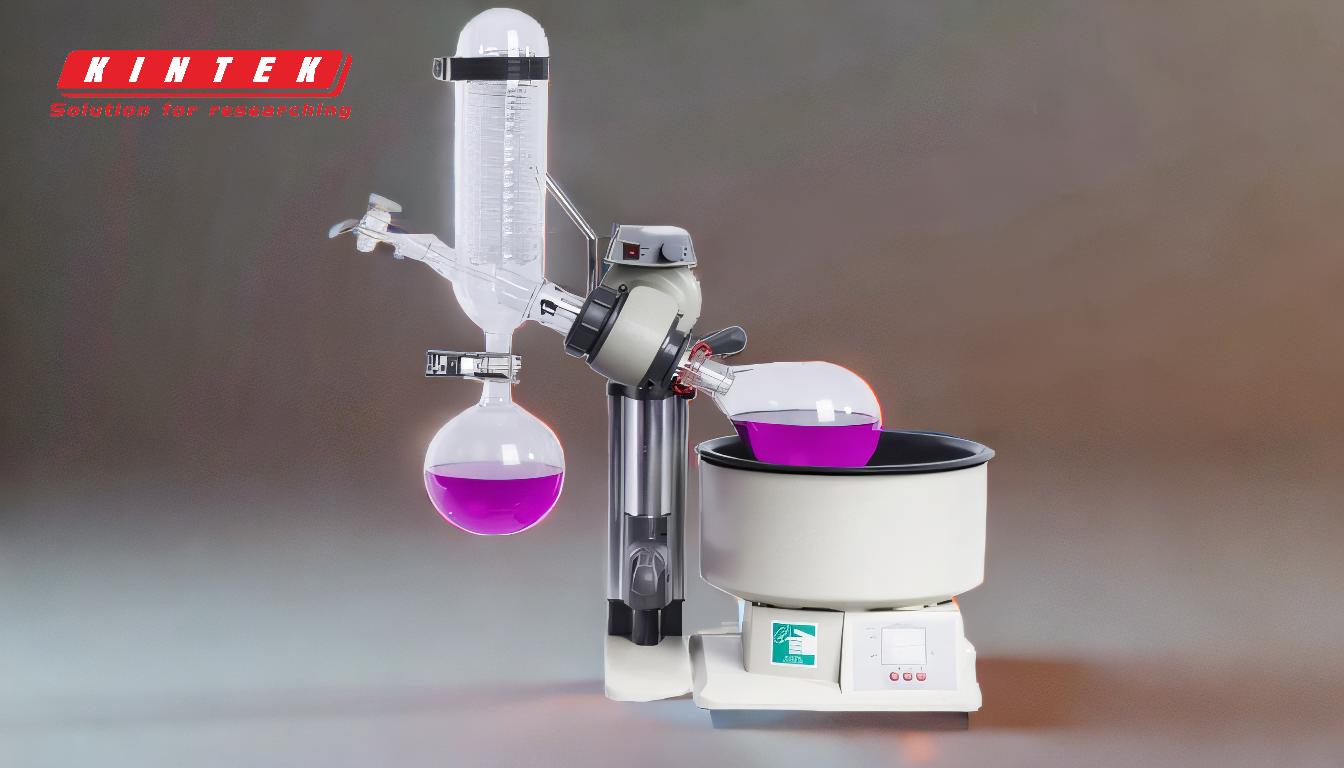A rotary evaporator is commonly used for solvent removal and concentration of samples, but there are several alternatives depending on the specific application. The Falling Film Evaporator and Wiped Film Evaporator are two primary alternatives for evaporation processes, offering different operational principles and advantages. Additionally, methods like Solid Phase Extraction (SPE) can replace rotary evaporators in certain applications, especially when efficiency and reagent conservation are priorities. For cooling needs, alternatives to traditional chillers, such as dry ice condensers, can also be considered. Below, we explore these alternatives in detail, focusing on their mechanisms, advantages, and suitability for various applications.
Key Points Explained:

-
Falling Film Evaporator
- How it works: This evaporator operates similarly to a Vertical Shell & Tube Heat Exchanger. The liquid to be evaporated flows downward as a thin film along the inner walls of heated tubes, while vapor is separated from the liquid phase.
-
Advantages:
- Efficient heat transfer due to the large surface area of the thin liquid film.
- Suitable for heat-sensitive materials as it operates at lower temperatures and reduces thermal degradation.
- Ideal for continuous processes and large-scale operations.
- Applications: Commonly used in the chemical, pharmaceutical, and food industries for concentrating heat-sensitive liquids like fruit juices, milk, and pharmaceutical solutions.
-
Wiped Film Evaporator
- How it works: This evaporator uses a rotating wiper blade to spread the liquid into a thin, turbulent film on the heated surface. The thin film enhances heat transfer and evaporation rates.
-
Advantages:
- High evaporation efficiency due to the turbulent flow and thin film.
- Effective for viscous or heat-sensitive materials.
- Short residence time, minimizing thermal stress on the product.
- Applications: Used in the distillation of high-boiling-point materials, purification of oils, and concentration of viscous products like resins and polymers.
-
Solid Phase Extraction (SPE)
- How it works: SPE is a sample preparation technique where analytes are separated from a liquid mixture by adsorption onto a solid phase. It replaces liquid-liquid extraction methods, including those requiring rotary evaporators.
-
Advantages:
- High efficiency and reliability.
- Consumes fewer reagents, reducing costs and environmental impact.
- Suitable for small-scale and precise applications.
- Applications: Widely used in analytical chemistry, environmental testing, and radiopharmaceutical formulation.
-
Cooling Alternatives for Evaporation Processes
-
Dry Ice Condenser:
- A cost-effective alternative to traditional chillers, especially for small-scale or temporary setups.
- Uses dry ice to cool the condenser, eliminating the need for a chiller in some cases.
-
Jury-Rigged Chillers:
- Custom cooling setups can be created using available materials, though they may lack the precision and reliability of commercial chillers.
-
When to Use a Chiller:
- For consistent and precise temperature control, a dedicated chiller is often necessary, especially in industrial or high-throughput settings.
-
Dry Ice Condenser:
-
Choosing the Right Alternative
-
Considerations:
- Scale of Operation: Falling Film and Wiped Film Evaporators are better suited for large-scale processes, while SPE is ideal for small-scale, precise applications.
- Material Properties: Viscous or heat-sensitive materials benefit from Wiped Film Evaporators, while SPE is preferred for analytical and low-volume applications.
- Budget and Infrastructure: Dry ice condensers or jury-rigged chillers can reduce costs, but commercial chillers provide better reliability and performance.
-
Considerations:
In summary, the choice of an alternative to a rotary evaporator depends on the specific requirements of the application, including the scale of operation, material properties, and budget constraints. Falling Film and Wiped Film Evaporators are excellent for large-scale evaporation, while SPE offers a precise and efficient alternative for sample preparation. Cooling needs can be addressed with dry ice condensers or custom setups, though commercial chillers remain the most reliable option for consistent performance.
Summary Table:
| Alternative | How It Works | Advantages | Applications |
|---|---|---|---|
| Falling Film Evaporator | Liquid flows as a thin film along heated tubes; vapor is separated. | Efficient heat transfer, low thermal degradation, ideal for large-scale use. | Chemical, pharmaceutical, and food industries (e.g., fruit juices, milk). |
| Wiped Film Evaporator | Rotating wiper blade spreads liquid into a thin film on a heated surface. | High evaporation efficiency, suitable for viscous/heat-sensitive materials. | Distillation of oils, purification of resins, and polymer concentration. |
| Solid Phase Extraction (SPE) | Analytes are adsorbed onto a solid phase from a liquid mixture. | High efficiency, reagent conservation, precise for small-scale applications. | Analytical chemistry, environmental testing, and radiopharmaceuticals. |
| Cooling Alternatives | Dry ice condensers or jury-rigged chillers for cost-effective cooling. | Cost-effective for small-scale setups; commercial chillers for precision. | Temporary setups or budget-conscious operations. |
Need help choosing the right alternative for your application? Contact our experts today for personalized advice!










